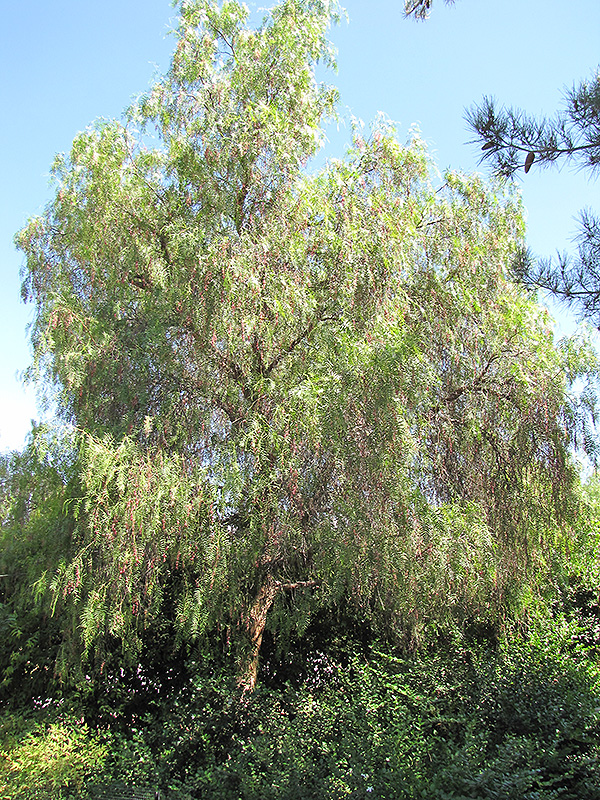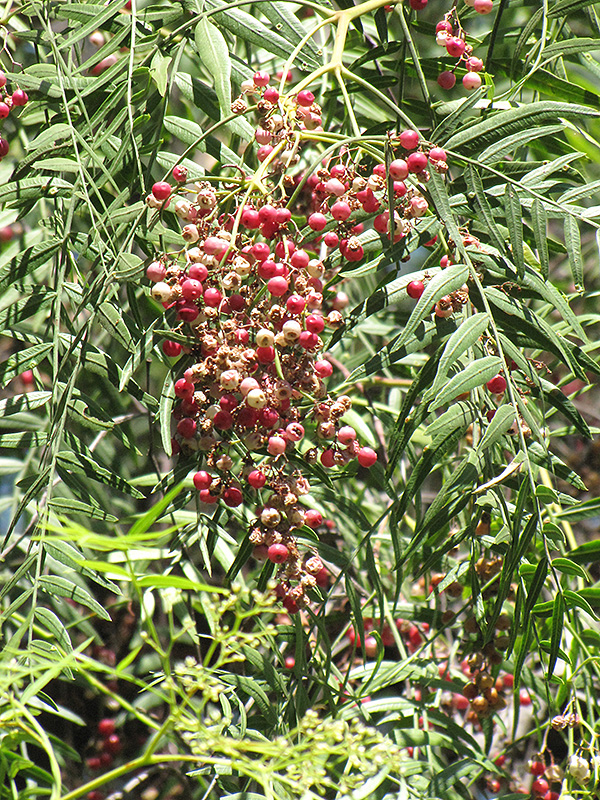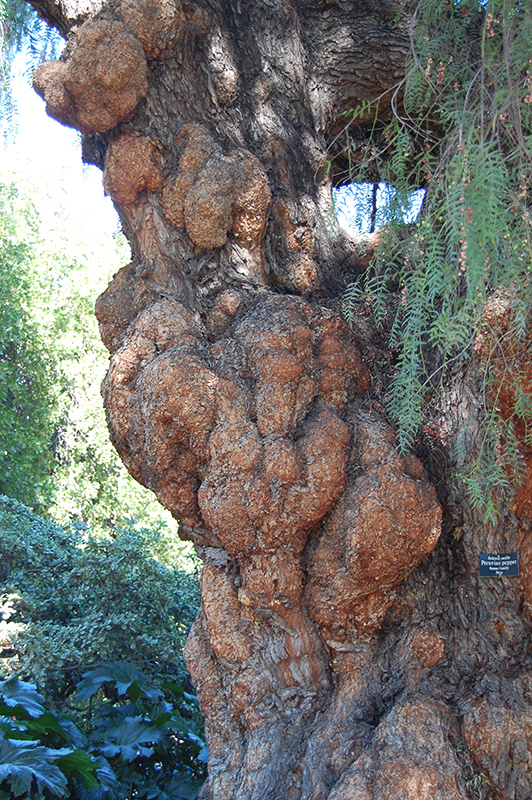Height: 35 feet Spread: 35 feet
Sunlight:
Hardiness Zone: 8a Other Names: Peruvian Peppertree, Peppercorn Tree Description: An evergreen tree with a wide, weeping habit and rough, twisted dark gray bark; pendulous, whitish-yellow flowers appear in summer, followed by clusters of red berries on female trees in fall to winter; adaptable, and tolerates many adverse conditions Ornamental Features California Pepper Tree is draped in stunning clusters of fragrant buttery yellow flowers with white overtones hanging below the branches from early to mid summer. It features an abundance of magnificent red berries from mid fall to mid winter. It has green evergreen foliage. The small narrow pinnately compound leaves remain green throughout the winter. The rough dark gray bark adds an interesting dimension to the landscape. Landscape Attributes California Pepper Tree is an evergreen tree with a rounded form and gracefully weeping branches. Its relatively fine texture sets it apart from other landscape plants with less refined foliage. This tree will require occasional maintenance and upkeep, and should only be pruned after flowering to avoid removing any of the current season's flowers. It is a good choice for attracting birds, bees and butterflies to your yard. Gardeners should be aware of the following characteristic(s) that may warrant special consideration; California Pepper Tree is recommended for the following landscape applications; Planting & Growing California Pepper Tree will grow to be about 35 feet tall at maturity, with a spread of 35 feet. It has a low canopy with a typical clearance of 4 feet from the ground, and should not be planted underneath power lines. It grows at a fast rate, and under ideal conditions can be expected to live to a ripe old age of 100 years or more; think of this as a heritage tree for future generations! This is a dioecious species, meaning that individual plants are either male or female. Only the females will produce fruit, and a male variety of the same species is required nearby as a pollinator. This tree should only be grown in full sunlight. It is very adaptable to both dry and moist locations, and should do just fine under average home landscape conditions. It is not particular as to soil type or pH. It is highly tolerant of urban pollution and will even thrive in inner city environments. This species is not originally from North America.![]()
![]()
![]()
![]()
![]()
![]()
![]()
![]()
![]()
![]()
![]()
top of page
Louie's Nursery Menifee - Plant Finder
Characteristics
Applications
Features & Attributes
This tool is an online resource representing many of the varieties that we carry over the course of the season, and is intended for informational purposes only. Inventory varies seasonally, so we cannot guarantee that every plant will be in stock at all times - please contact the store directly for current availability. It does not include our entire selection of plants, so be sure to visit our store to see varieties that may not be represented on this list.
bottom of page


